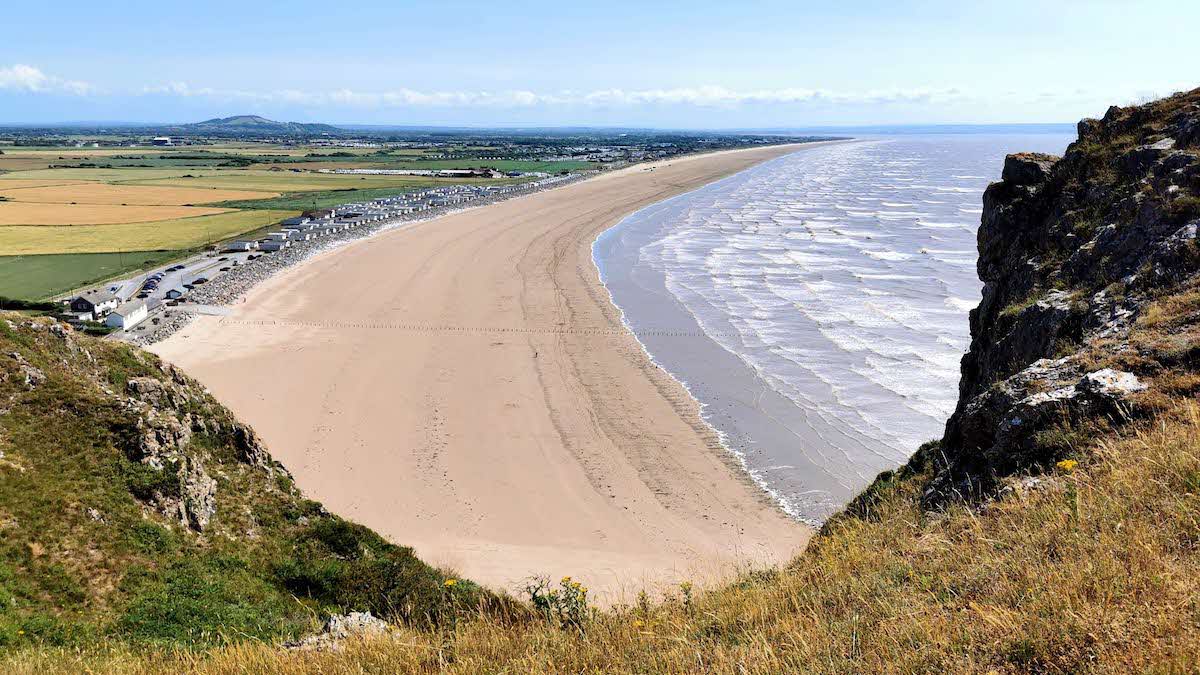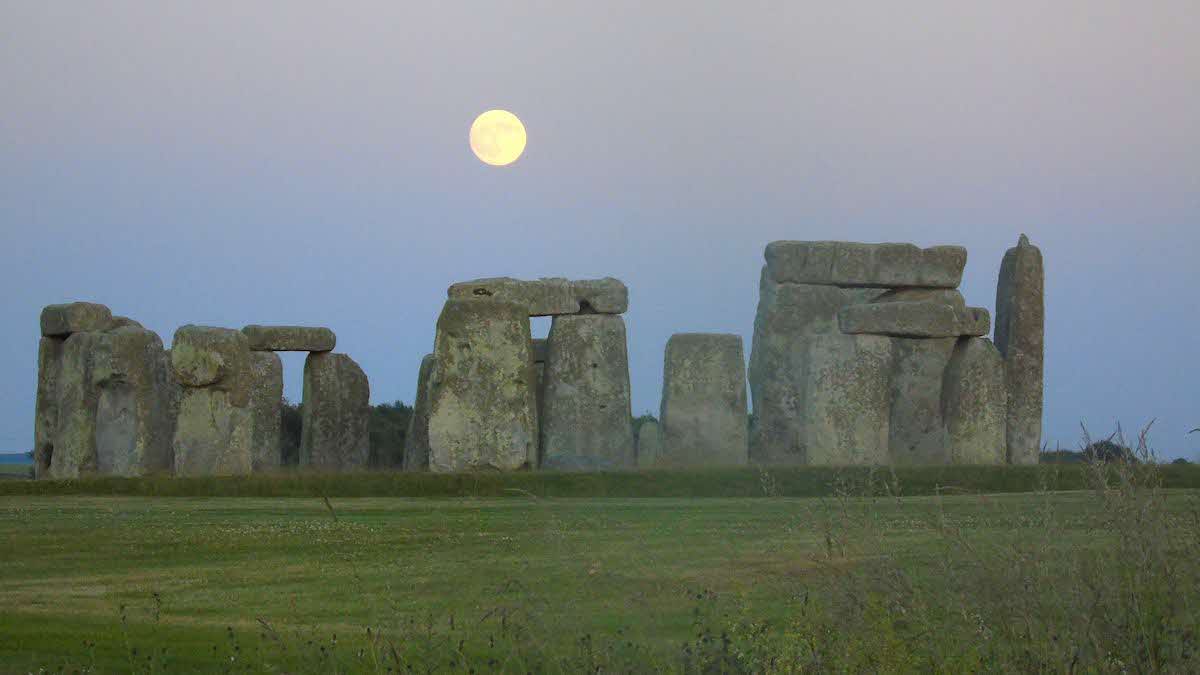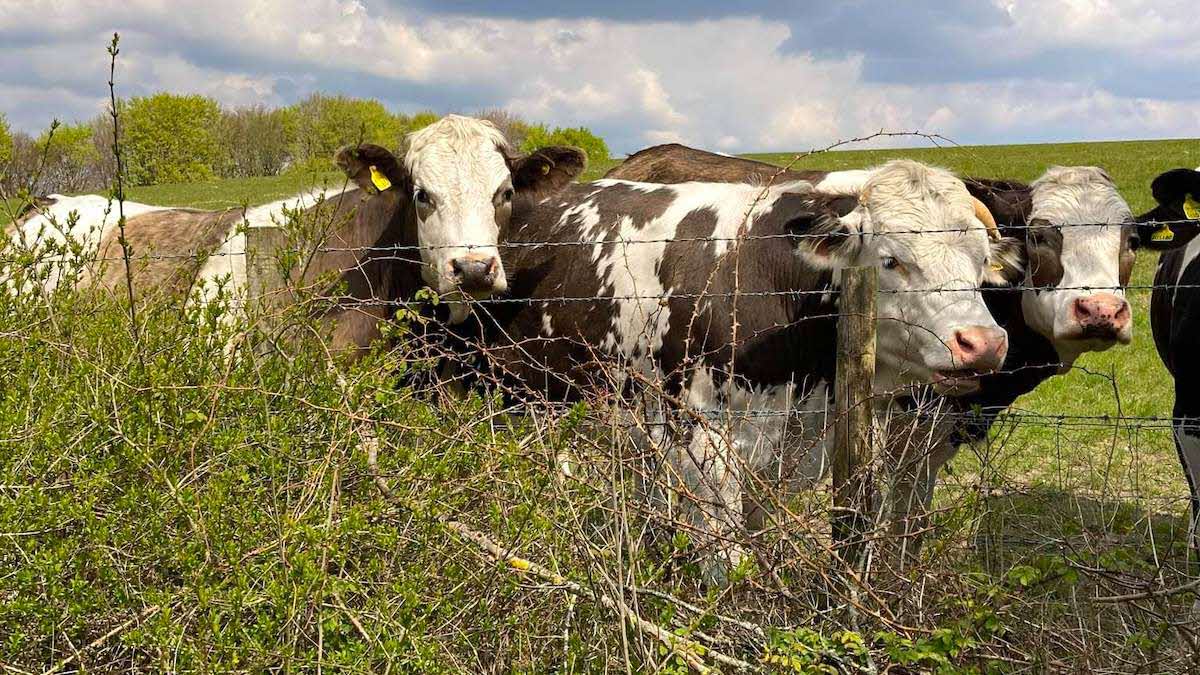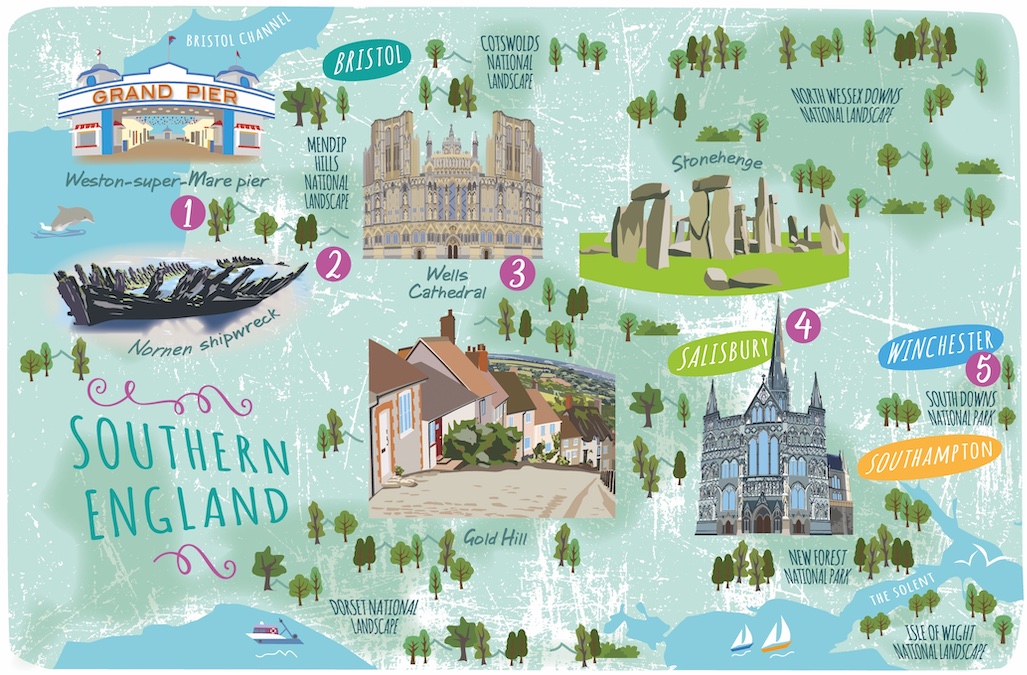Book a Club campsite
Explore hundreds of Club campsites and plan for stays throughout the year. There are plenty of locations to choose from, search and book today.
Book nowLee Davey takes in a quintet of fine sites in southern England, marvelling at natural wonders and human achievements alike
 Brean Down. Photo by member Kenneth Marsden
Brean Down. Photo by member Kenneth Marsden
Beginning on the Bristol Channel and heading eastwards to the fringes of the South Downs, this month’s tour takes in geographic marvels, sandy beaches, world-renowned cathedrals, a safari park and plenty more besides.
Situated on the Somerset coast to the south-west of Bristol, within easy reach of the settlements of Brean, Berrow and Burnham-on-Sea, Hurn Lane Club Campsite draws lovers of seaside fun to its 138 touring pitches. It sits within a popular region (there are several holiday parks nearby), so guests benefit from the attractions and amenities that footfall brings. Many of the members I spoke to said they were fans of the nearby beach, which is dog-friendly year-round.
Stretching as far as the eye can sea, Berrow and Brean Beach is the final resting place of the ill-fated Nornen – in 1897 the ship departed the Port of Bristol (bound for the US with its cargo of resin and turpentine) when a storm rolled through. Shelter was sought, but the ship’s torn sails meant it drifted onto the sands at Berrow. Fortunately the crew was rescued, but the vessel stuck fast, its skeletal remains still visible at low tide. (Please be aware of fast incoming tides and dangerous mud in the vicinity of the Berrow wreck and follow safety instructions on warning signs at all times along this stretch of coast.)
Other nearby attractions include Brean Leisure Park (home to an amusement park, indoor play centre, water park and 18-hole golf course), spectacular Cheddar Gorge and Caves and the seaside resort of Weston-super-Mare a little farther to the north. History buffs will also be impressed by the Second World War bunker nestled in a corner of the Hurn Lane site itself.
 Stonehenge. Photo by Denise Prior
Stonehenge. Photo by Denise Prior
Driving east for around three-quarters of an hour, we reach Wells, located in the Mendip district of Somerset. Widely regarded as England’s smallest city, Wells is known for its historic buildings, including its spectacular cathedral, a stand-out example of English Gothic architecture. Opposite the cathedral is Vicars’ Close, one of the oldest intact medieval streets in Europe still used for its original purpose. Other notable landmarks include the Bishop’s Palace with its beautiful gardens and moat, the Market Place, and the Wells and Mendip Museum, which showcases the history of area.
The city hosts various events throughout the year – time your visit right and you could enjoy the likes of the Wells Food Festival or the Wells Comedy Festival.
Just two miles south-west of the city centre lies Riverside Certificated Location (CL), a peaceful base where you can kick back and relax amid beautiful surroundings, or use as a base for exploring Wells, Glastonbury and the Mendip Hills. There’s a separate seating and barbecue area, where you can watch the river and its inhabitants and, should you and your four-legged friend wish to stretch your legs, there’s a one-acre field adjacent to the site.

Continuing east into Wiltshire, our next base was Longleat Caravan and Motorhome Club Campsite, a few minutes from Warminster. Longleat occupies a special place in my heart as it was one of the first sites we booked when we bought our first caravan. It instantly felt like home, and memories came flooding back when I bumped into new Club members enjoying their first night. They were pleased to find excellent facilities on site, which helped ease them into their new hobby.
The site staff said that approximately 50% of members who stay at Longleat are season ticket holders for the nearby house and safari park (the first to be built outside of Africa), with bookings filling up whenever special events are announced. It’s worth noting that although the Club site nestles on the edge of Longleat’s grounds, tickets for the attractions can only be purchased from longleat.co.uk.
Two very different destinations which are near Longleat share a two-wheeled link – Gold Hill in Shaftesbury and Wind Hill B1kepark. Gold Hill rose to stardom thanks to the Hovis ‘Boy on the Bike’ advert directed by Sir Ridley Scott – although many people thought it was filmed in Yorkshire. Shaftesbury is a popular walking destination, with many routes incorporating the Gold Hill cobbles before offering the opportunity to recuperate with a coffee in one of the many cafes. Closer to the Longleat campsite, Wind Hill B1kepark is a mountain bike lover’s dream, offering 10 routes that accommodate (and test) all abilities. I’ve yet to visit myself, but friends have raved about it!
 Salisbury Hillside. Photo by member Andrea Barnard
Salisbury Hillside. Photo by member Andrea Barnard
Our next stop was Salisbury Hillside Club Campsite. This was our first visit, and with the A30 providing such easy access, I wrongly assumed it might be blighted by traffic noise. However, the volume dropped off as we descended the eponymous ‘hill’, and we were met with farmland views. Salisbury holds a special place in my heart as I worked for the local newspaper some 20 years ago. To me, the Salisbury Journal remains the heart of the city, although the Club members I spoke to were wowed by the impressive cathedral rather than the anonymous building that used to be my office!
A mix of ancient and new, the city is very much alive. Changing habits, dietary or otherwise, may have ushered in a range of new shops to Butcher Row, but the narrow street and high buildings give more than a passing glimpse into times gone by.
On a hill two miles to the north of modern-day Salisbury, you will find Old Sarum. Bathed in sunshine when we visited, the imposing site boasts more than 2,000 years of history, having been home to an Iron Age fort, royal castle and the original Salisbury Cathedral. Talking of which, make sure you visit the ‘modern’ version back in town – a mere youngster at ‘just’ 760 years of age.

Our final stop, Winchester Club Campsite in Hampshire, was gleaming after a significant redevelopment in 2022. Fresh asphalt led us to the reception building and quality fit-and-finish continues across the site, the washblocks even featuring local photographs from wall to ceiling.
Pitch layouts have been redesigned in certain areas to mirror changing touring needs, with a couple of more spacious premium pitches boasting a platform for barbecues and a ‘window’ through the hedging granting views across the fields to the rear.
The site is split into two sections, each with its own amenities building. The second section of the site has been developed to allow rapid charge of electric vehicles and features the all-important ferry pitches, popular with members travelling via ports at Southampton, Portsmouth and beyond.
The site sits on the edge of the beautiful South Downs National Park, with many visitors embarking on trips across the chalky ridge, no-doubt following in the footsteps of ancient settlers 5,000 years ago. Today, the South Downs is a mecca for outdoor enthusiasts thanks to 3,300km of public rights of way that attract walkers, cyclists and horse riders alike.
During our travels, we had marvelled at the beauty of nature and man-made achievements. We gazed in awe at the stricken Nornen, enjoyed a mini city break in historic Wells, awoke to the sound of sea lions at Longleat and picnicked in the grounds of a centuries-old cathedral. The relatively short distances between sites made for a relaxing tour – although the late breakfast at one site, before lunch at the next, did nothing for my waistline! I hope I’ve whetted your appetite for exploring this lovely part of the world.